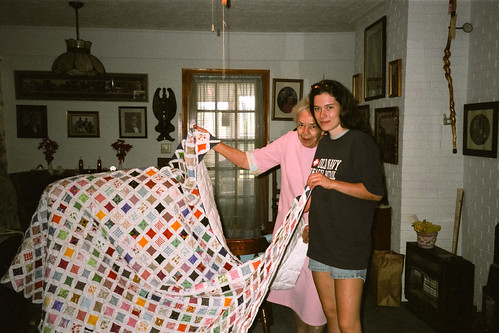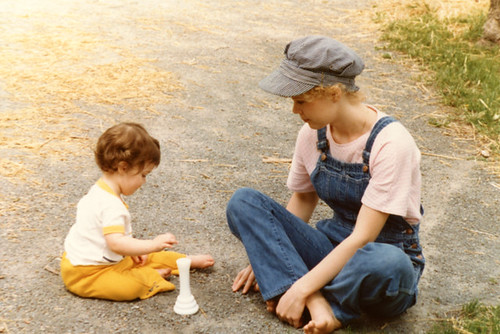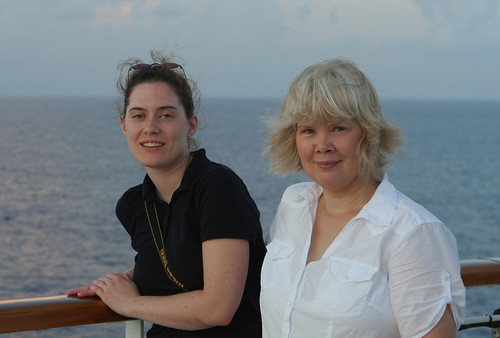I've challenged myself to scan in one roll of old film negatives per day for the month of October.
Maybe I should back up a bit and explain. I get my love of photography from my Dad. I also get my love of organizing from my Dad. He and I both have books of negatives, carefully preserved in negative sleeves labeled with dates and events. Except I thought I'd take mine a step further a few years ago and put them in the safe at our house. Bad idea. The safe turned out to be very humid inside, and the negatives pages formed water droplets between the plastic and the negatives. Every single page in my negative binder looks like this now...
The first time I saw what had happened, I freaked (and Darren got it even worse- many of his slides molded and were completely destroyed). Then I read everything I could find on cleaning water spots off of negatives. It looked like it could be done, but it was a long, tedious, and dodgy process. So I procrastinated for several years (yes, I said years), until one day last week I decided to just pull a strip of negatives out of the sleeve (the water has since dried out, leaving only the spots) and run it through the negative scanner as is, just to see what happened.
You know what happened? It scanned perfectly. No off colors, no water spots showing, no signs of damage at all. I was a very happy girl, and right then and there I decided it was time to stop procrastinating and get those pictures scanned in, backed up, and protected.
I'm using this scanner, a Nikon Coolscan V ED.
Unfortunately, Nikon has discontinued this model, but if you can find one for a decent price used, I can't recommend it enough. All you have to do is feed in a strip of film, choose the frames you want to scan from the thumbnails presented in the software that comes with it, and click the scan button. The files is produces are HUGE, but they are lossless TIFFs, and you can literally see the crystals on the film at 100% zoom. It's nothing short of amazing. Oh, and it comes with a slide adapter, too.
Many flatbed scanners come with negative attachments, but I've found when I use one that it's either very hard to get the strips lined up properly, or there is a slight amount of color aberration at the edges where the film is slightly curved. This is one of those cases where a dedicated tool for the job really is the best.
As I've been scanning, I've come across some real gems, like this photo of my great-grandmother and I in 1998. We'd just finished a cathedral window quilt that we'd been working on together for a long time. I know I have prints of this picture somewhere, but I can't find them and am very glad to have the negative scanned in now.
I really, really want to get my Dad's old negatives scanned in, as well. He's got thousands of photos from when my brother and I were growing up, like this sweet photo that my Mom sent a few weeks ago. I don't know how old I was at the time- not even two, maybe? I'd be devastated if photos like this one were destroyed
I love the comparison Mom made of it to this photo taken on our Bahamas cruise last fall. Please ignore the beach hair and the fact that I look like I'm stoned. I think I'd been snorkeling most of the day. :)
So the lesson for the day is this- protect your negatives just as you protect your digital photos now. Those negatives, not the prints made from them, are your originals. Scan them in, or have them scanned in (check for reliable services in your local area and avoid mailing negatives if possible), back them up along with all your digital pictures, and then protect the negatives in appropriate storage, just in case. Don't let those little pieces of your history be destroyed, like mine nearly were (and like Darren's actually were).





